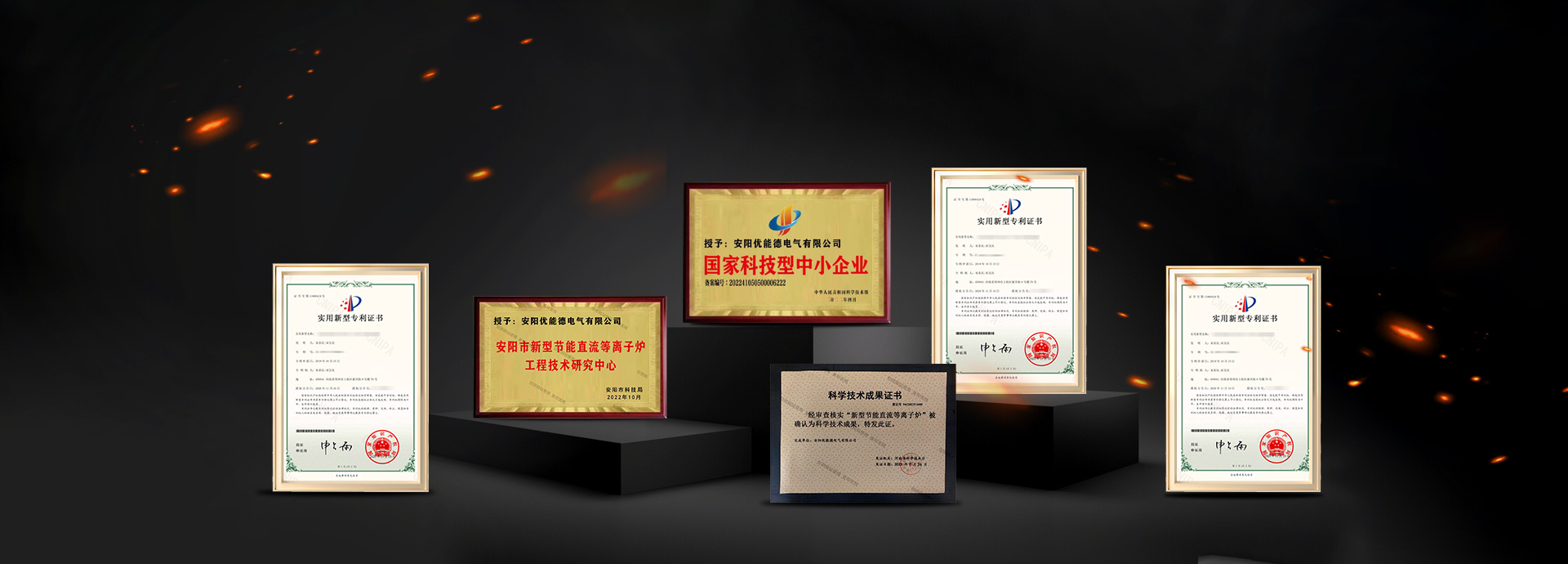Electric arc furnace: From its origin to the future, reshaping the industrial smelting pattern!
Update Time: 2025-05-15 Follow: 708
Electric arc furnace: From its origin to the future, reshaping the industrial smelting pattern
In the long process of industrial development, electric arc furnaces have gradually developed from the initial concept to become a key force in reshaping the modern smelting pattern.
. Since its birth, electric arc furnaces have continuously evolved and gone through various stages of technological innovation and application expansion. Now, they are standing at a new historical starting point, moving towards a more intelligent, * *, and green future, continuously injecting vitality into the development of industries such as steel and non-ferrous metals.
1. Development of Electric Arc Furnace
The concept of electric arc appeared as early as the 19th century, and chemists and engineers at that time actively explored new methods of melting steel, laying a theoretical foundation for the birth of electric arc furnaces.
. In 1907, the United States welcomed the commissioning of * * electric arc furnaces, which posed a major challenge to traditional blast furnaces that relied on coal. However, in the early stages of the development of electric arc furnaces, due to the high cost of electricity, their application scope was greatly affected, mainly concentrated in the field of special steel production with extremely high requirements for steel quality. The Second World War became an important opportunity for the development of electric arc furnaces. During the war, European countries faced a sharp increase in steel demand, and electric arc furnaces were widely used for steelmaking to meet wartime needs due to their advantages of low capital costs and fast construction speed. After the war, significant progress was made in power generation technology, resulting in more stable power supply and reduced costs, which greatly improved the economic efficiency of electric arc furnace technology. In the mid-20th century, electric arc furnaces began to emerge and gradually replaced some traditional steelmaking methods, being applied in small-scale production and "small steel mills" specialized in recycling scrap metals. In the 1950s and 1960s, electric arc furnace technology brought competitive advantages to some steel manufacturers. Compared to large steel enterprises that used comprehensive blast furnace alkaline oxygen converter (BF-BOF) technology, small steel mills that adopted electric arc furnaces were able to adjust their production strategies more flexibly to meet diversified market demands. Secondly, key technological innovation drives development. In order to improve the production efficiency of electric arc furnaces, increasing power has become a key breakthrough point. Ultra high power electric arc furnaces have emerged, significantly reducing the melting time of furnace materials and increasing the output per unit time by significantly increasing the input power. At the same time, the supporting high-voltage long arc operation technology enables the arc to heat the furnace material more evenly, further improving the melting efficiency and quality. For example, Nangang's 100t ultra-high power electric arc furnace has gradually increased its production capacity from the initial nominal capacity of 70 tons and an annual capacity of 300000 tons to the current annual capacity of 1.2 million tons through continuous optimization of technology, fully demonstrating the significant effectiveness of power improvement technology. (II) Energy saving and Environmental Protection Technology Innovation With the increasing global attention to energy issues and environmental protection, electric arc furnaces have achieved numerous innovative results in energy saving and environmental protection. In terms of energy conservation, DC arc furnaces have become representatives of energy-saving arc furnaces due to their high energy conversion efficiency. Compared to AC arc furnaces, DC arc furnaces reduce energy loss between electrodes, effectively reducing energy consumption. At the same time, by using scrap preheating technology and utilizing the high-temperature exhaust gas discharged from the electric arc furnace to preheat the furnace material, the originally wasted heat is recovered, further improving energy utilization efficiency. In terms of environmental protection, the smoke and dust treatment technology of * * can collect and purify a large amount of smoke and dust generated during the melting process of electric arc furnaces, reducing pollution to the atmospheric environment; The application of water-cooled furnace walls and water-cooled furnace covers not only extends the service life of the furnace body, but also reduces thermal radiation, energy waste, and thermal pollution to the surrounding environment.
(III) Automation and Intelligent Control
Modern electric arc furnaces are making great strides towards automation and intelligence.
. The electrode automatic adjustment technology can adjust the electrode position and current size in real time according to the melting situation in the furnace, ensuring the stability of the arc and greatly reducing energy consumption. The oxygen level control technology of molten steel accurately and stably controls the oxygen level of molten steel through sensors and control systems, meeting the production requirements of different steel grades. The slag discharge control technology utilizes the eccentric bottom tapping structure (EBT) of the electric arc furnace and is equipped with an infrared slag discharge detection device to effectively control the amount of steel left in the furnace, reduce the amount of slag discharge, and improve the quality of molten steel. The application of these automation and intelligent control technologies not only improves production efficiency and product quality, but also reduces labor costs and intensity, and enhances the safety and stability of the production process.
III. Role Transformation and Application Expansion in the Industry
(1) The Power of Transformation in the Steel Industry
In the steel industry, the role of electric arc furnaces has undergone significant changes.
. Once, electric arc furnaces were mainly used for the production of special steel. Nowadays, with the maturity of technology and the reduction of costs, it has become one of the mainstream methods of steel production, especially occupying a core position in short process steelmaking. Taking the United States as an example, the current proportion of electric arc furnace steel production is as high as 69.0%. Short process steelmaking, relying on the advantages of electric arc furnaces, has achieved the production of scrap steel as the main raw material, greatly reducing dependence on primary resources such as iron ore, reducing carbon emissions, and promoting the development of the steel industry towards a green and sustainable direction. At the same time, electric arc furnaces can quickly respond to market demand, flexibly adjust production plans, and produce various types of steel, from ordinary construction steel to automotive steel, aerospace steel, etc., meeting the diverse needs of different fields for steel.
(II) Expansion and Application of Nonferrous Metals and Other Fields
The application scope of electric arc furnaces has already surpassed the steel industry and plays an important role in the field of non-ferrous metal smelting.
. In the production of non-ferrous metals such as copper, aluminum, and titanium, electric arc furnaces can accurately control the melting temperature and atmosphere, meeting the strict requirements of non-ferrous metals for melting processes. For example, in the production of titanium alloys, electric arc furnaces can ensure the purity and performance of the alloy, providing materials for aerospace, medical and other fields. In addition, in the preparation of some special materials, such as refractory metals, metal carbides, and the melting process of ceramic materials, electric arc furnaces have become indispensable equipment due to their high temperature and flexible heating methods. In the metal casting industry, electric arc furnaces are used for remelting and purifying scrap metals, improving the recycling rate of scrap metals, reducing production costs, and promoting the recycling of resources.
IV. Future Development Trends
(1) Deep Integration of New Energy and Intelligence
With the vigorous development of the global new energy industry, electric arc furnaces will be deeply integrated with clean energy such as solar and wind power.
. On the one hand, utilizing new energy generation to power electric arc furnaces can further reduce carbon emissions and achieve true green production; On the other hand, with the help of cutting-edge technologies such as 5G, big data, and artificial intelligence, comprehensive real-time monitoring and precise intelligent control of the operation status of electric arc furnaces can be achieved. Through data analysis and intelligent algorithms, optimize smelting process parameters, predict equipment failures in advance, achieve preventive maintenance of equipment, improve production stability and reliability, and reduce operating costs. (2) Further improve the level of resource utilization and environmental protection. In the future, electric arc furnaces will pay more attention to the utilization of resources and environmental protection. In terms of resource utilization, continuously improve the utilization rate of raw materials such as scrap steel, explore the application of more recyclable materials in electric arc furnace melting, and reduce the exploitation of primary resources. In terms of environmental protection, we will continue to develop and apply more advanced technologies for treating waste gas, wastewater, and waste residue, achieving near zero emissions of pollutants. For example, by improving smoke and dust treatment technology, the content of harmful substances in smoke and dust can be further reduced; Develop new slag treatment processes to achieve resource utilization of slag, convert it into useful products such as building materials and fertilizers, and reduce waste emissions. (III) Expanding new application areas and product innovation With the continuous progress of technology, electric arc furnaces are expected to explore application space in more emerging fields. For example, in the preparation of new energy battery materials and the melting of new semiconductor materials, the high temperature and precise control characteristics of electric arc furnaces have broad application potential. At the same time, electric arc furnaces will assist in product innovation of steel and other metal materials. By optimizing the melting process, new materials with higher strength, better corrosion resistance, and better comprehensive performance will be developed to meet the urgent needs of manufacturing industries such as aerospace, marine engineering, and electronic information for materials, and promote the technological upgrading and development of related industries. From the difficult exploration at the beginning of its birth to becoming the backbone of industrial smelting today, electric arc furnaces, driven by technological innovation, continue to expand their application fields and profoundly change the development pattern of the steel and related industries. Looking ahead to the future, electric arc furnaces will innovate and develop in various aspects such as new energy, intelligence, and environmental protection, contributing greater strength to the sustainable development of global industry and writing a more brilliant chapter. If you have any further suggestions for modifying the technical details, case analysis, or other aspects of the article, or if you would like me to continue writing in a specific direction around electric arc furnaces, please feel free to let me know at any time.


